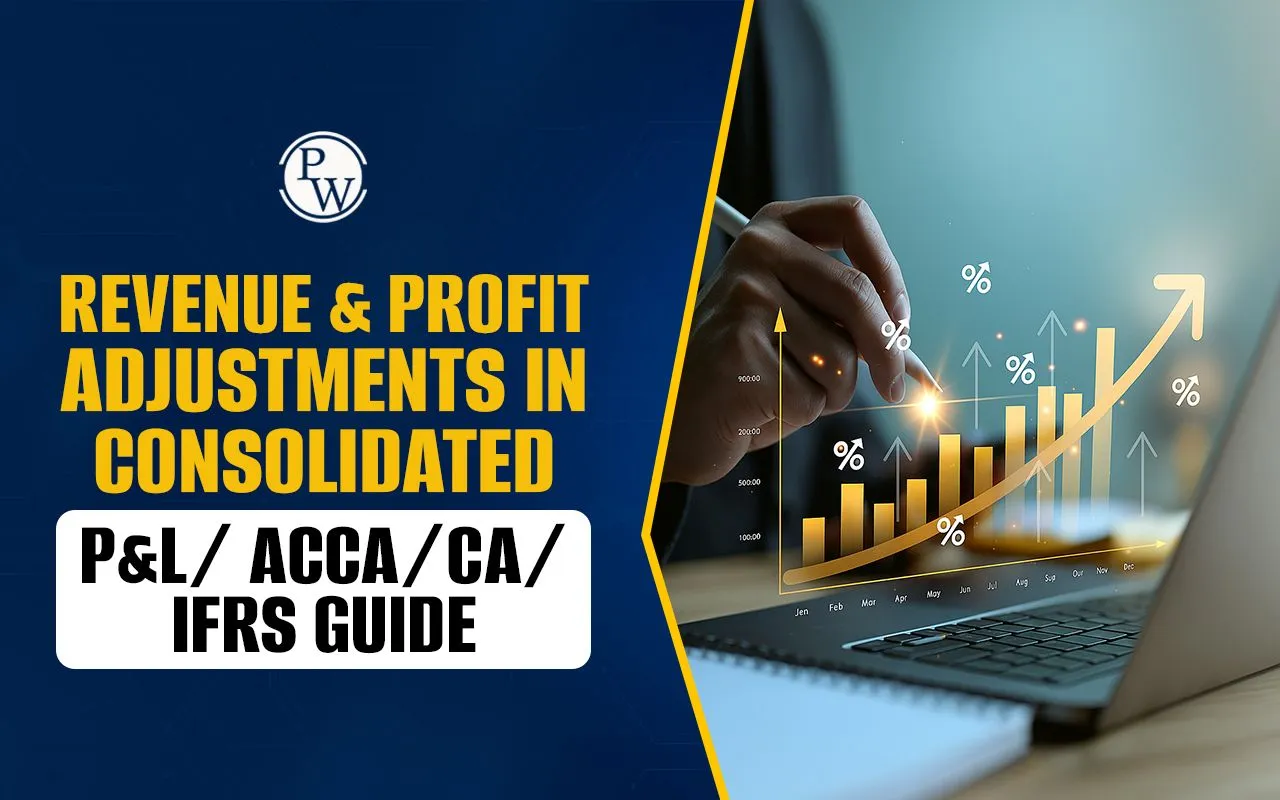
Revenue and Profit Adjustments in the Consolidated Profit and Loss Statement are essential elements of financial reporting when a parent firm has one or more subsidiaries. Under IFRS 10 Consolidated P&L, companies create consolidated financial statements by merging the revenue and costs of both the parent and subsidiary. This procedure is crucial for students getting ready for the ACCA SBR consolidation subjects and CA assessments.
Revenue and Profit Adjustment in Consolidated P&L refers to the process of modifying and enhancing the overall income and profit numbers of both parent and subsidiary companies. It entails detecting and eliminating internal transactions, unrealized gains, and redundant entries to provide a precise financial overview.
This is crucial because, without these modifications, the consolidated report might display inflated revenue and profit compared to what the group truly generated. Modifications guarantee that only genuine transactions with external entities are represented, providing investors, management, and auditors with an accurate perspective of the group’s performance.
Consolidated P&L functions as a unified report that displays the overall revenue and profit of the parent company alongside its subsidiaries combined. To obtain an accurate representation of the company group, revenue and profit modifications in the consolidated P&L are implemented to eliminate duplicate records or internal transactions.
Adjustment ensures that the displayed profit is genuine and not artificially enhanced by internal sales or transitions among the group. These adjustments are performed through consolidation journal entries to ensure that investors and auditors view the true financial outcomes.
These adjustments can be of different types, each ensuring that only the real and correct profit is shown in the report. Below are the main types:
Sometimes, the parent company sells products to its subsidiary, or the subsidiary sells products to the parent company. If we just sum the sales, it would appear that the company earned more than it actually did. Adjustment to revenue and profit in the consolidated P&L eliminates these internal transactions. According to IFRS 10 Consolidated Profit and Loss, this is essential for accurate reporting.
When goods are sold within the group but are still in inventory, the profit on those goods is not yet “real”. To correct this, the cost of sales is increased by the unrealized profit. This step is one of the most important revenue and profit adjustments in the consolidated P&L.
Non-Controlling Interest (NCI) refers to the portion of Profit attributable to external shareholders of the subsidiary. The portion of profit/loss attributable to the NCI is distinct from that of the parent company. This guarantees that the profit presented in the consolidated financial statements is just and precise.
When the subsidiary distributes a dividend to the parent, it is not considered income in the consolidated financial statements. This serves as another instance of modification to revenue and profit in the consolidated Profit and Loss statement to prevent double-counting.
When a company acquires a subsidiary within the year, only the earnings generated post-acquisition are included. Profits before acquisition are excluded. This is documented via consolidation journal entries to ensure precision.
Associates(in which the parent possesses 20%-50%) are not entirely consolidated. Their profit share is incorporated through the equity method instead. Adjustments to revenue and profit in the consolidated Profit and Loss are made here as well to prevent mistakes.
Parent Company A owns 80% of Subsidiary B
Parent Revenue: Rs 50,000, profit: Rs 10,000
Subsidiary Revenue: Rs 20,000, profit Rs 5,000
Intra-group sales: Rs 5,000 from parent to subsidiary
Unrealized profit on stock: 500
Steps:
Combine Revenue: Rs 50,000+Rs 20,000-Rs 5,000(intra-group)= Rs 65,000
Combine Profit: Rs 10,000+Rs 5,000-500(URP)= Rs 14,500
NCI Share(20% of Rs 5,000-Rs 500=Rs 4,500)=Rs 900
Parent Profit= Rs14,500-Rs 900=Rs 13,600
The purpose of Adjustments revenue and profit in the consolidated P&L is to reflect the true financial results of the company group. Without these adjustments, the consolidated financial statements would display exaggerated results. By studying these steps, students can quickly understand the IFRS 10 consolidated Profit and Loss requirements.
Adjustments to Revenue and Profit in consolidated P&L consist of eliminating intra-group sales, adjustments for unrealized profits, accounting for NCI Share of Profit/Loss, and correcting for mid-year acquisitions. These modifications are carried out through consolidation journal entries and are part of the key ACCA SBR Consolidation topics.
| Also Check: |
| Irrecoverable Debts and Allowances for Recoverables |
| Taxation Examiner Report |
| How to Attempt ACCA MCQs Smartly for Maximum Marks? |
| Can You Finish ACCA in Two Years? |
